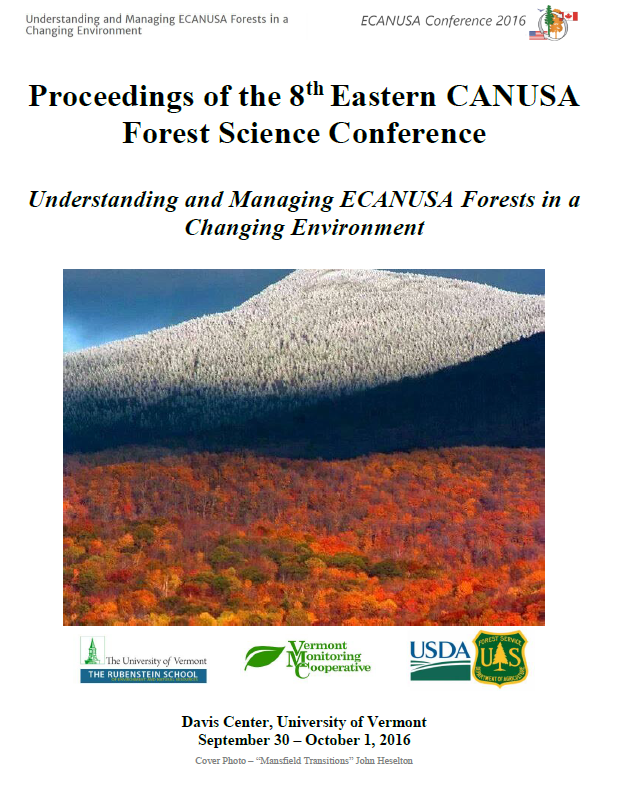ECANUSA Conference 2016
Understanding and Managing ECANUSA Forests in a Changing Environment
September 30 to October 1, 2016 - University of Vermont - Burlington, Vermont USA
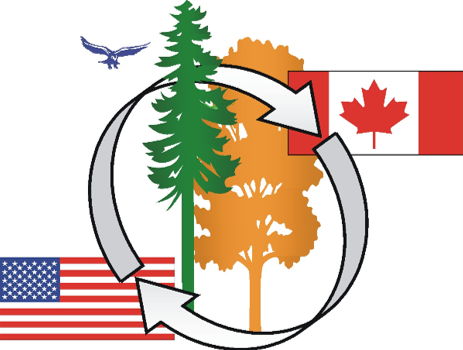
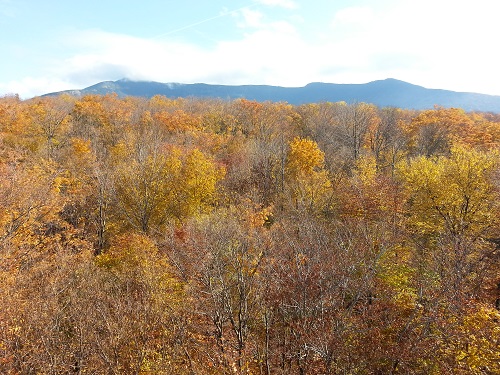 Photo: Jim Duncan
Photo: Jim Duncan
Home
The University of Vermont will host the 8th Eastern CANUSA conference in forest science from September 30th to October 1st, 2016. The theme for this year's gathering is "Understanding and Managing ECANUSA Forests in a Changing Environment". Currently, many stressors and agents of change are converging on the region’s forests and we are inviting scientists and practitioners from a large spectrum of expertise to address the challenges this presents.
As in past years, the conference will include a full day of plenary and concurrent oral presentations, a poster session and a half day field tour. Friday evening will also include a reception, dinner banquet and a keynote speaker. As always, ECANUSA is open to all forest science fields, including the following:
- Adaptive Management
- Decision Support Tools
- Forest health
- Forest disturbance ecology and dynamics
- Abiotic disturbance
- Human dimensions
- Community based forestry
- Family forest owners
- Land use and fragmentation
- Silviculture
- Managing forested ecosystems
- Forest policy and economics
- Forest ecology and wildlife
And all other subjects related to the forests of eastern North America.
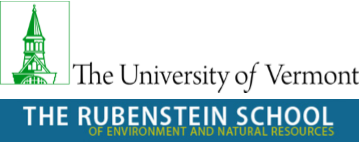

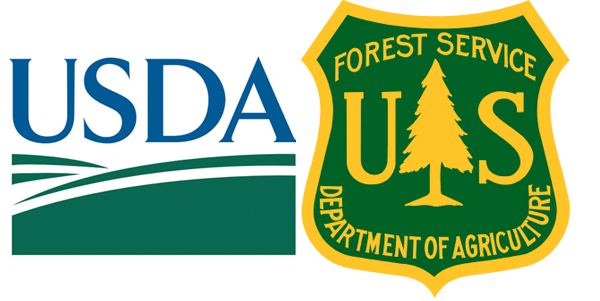
Links to past ECANUSA Conferences
Agenda
Key features of this year's event include:
- A diverse array of plenary and offered talks;
- A poster session and cocktail reception;
- A dinner banquet and keynote speaker;
- Field trips to the foothills of the Green Mountains to visit demonstration projects and long-term experimental sites on Saturday.
This conference has been approved for 7.0 Category 1 CFE credits from the Society of American Foresters Continuing Forestry Education Program. A sign in sheet and certificates of completion will be made available at the conference.
Agenda
- Friday September 30, 2016
- 7:30 – 8:30Arrive and registration
- 8:30 - 10:30Morning plenary session
Silver Maple Ballroom (401) - 8:30 - 8:45Dean Nancy Mathews and Anthony D'Amato, Forestry Program Director, Rubenstein School of Environment and Natural Resources, University of Vermont
Host's Welcome - 8:45 - 9:30Dan Kneeshaw, Université du Québec à Montréal
Boreal disturbance dynamics and global change - what does it mean for forestry? - 9:30 - 10:00Patricia Raymond, Ministère des Forêts, de la Faune et des Parcs du Québec
How silviculture can help forests cope with a changing environment - 10:00 - 10:30Tim Fahey, Cornell University
Environmental change and northern hardwood ecosystems: Recent observations from Hubbard Brook - 10:30 – 10:40Break - Refreshments in the Livak Fireplace Lounge
- 10:40 – 12:00Concurrent sessions
- 12:00 - 1:00Lunch Buffet - Silver Maple Ballroom (401)
- 1:00 – 2:40Concurrent sessions
- 2:40 - 2:50Break - Refreshments in the Livak Fireplace Lounge
- 2:50 – 4:30Concurrent sessions Show Sessions
- 4:30 - 6:00Poster session and cocktail hour (cash bar)
Silver Maple Ballroom (401) - 6:00 - 8:00Dinner banquet (with keynote speaker)
- Christian Messier, Institut des Sciences de la Forêt tempérée
Managing forests for resilience to climate change: incorporating complexity science and functional traits
Time Silviculture 1
Sugar Maple Ballroom (400)Land Use
Jost Foundation Room (422)Invasives
Williams Family Room (403)10:40 - 11:00 Bethany Muňoz - Northern mixedwood site productivity 50 years after whole-tree and stem-only harvesting, with and without prescribed burningAbstract Alison Adams - 30 years of forest conversion in the Northeast: historical patterns and future projectionsAbstract Molly Heuss - Evaluating the impacts of southern pine beetle on pitch pine forest dynamics in a newly invaded regionAbstract 11:00 - 11:20 Don Ross - Vermont’s Managed Forests and Soil Carbon Stocks: Interaction among Land-Use History, Earthworms and SiteAbstract Ian Anderson - Who are Maine’s beginning family forest owners?: A hybrid research-outreach study of new landownersAbstract Maryna Golivets - Patterns of nonnative invasive plant species diversity in gypsy moth defoliated forestsAbstract 11:20 - 11:40 Miranda T. Curzon - Management influences functional composition and diversity in northern hardwood and mixed-conifer forests in Maine and New Hampshire, USAAbstract Lloyd C. Irland - The Northern Forest, 1990-2016: visions and surprisesAbstract Ted Howard - Environmental variables associated with invasive glossy buckthorn (frangula alnus mill.) and indirect control strategies for forest managersAbstract 11:40 - 12:00 Patricia Raymond - Irregular shelterwood as an alternative to clearcutting in balsam fir-yellow birch standsAbstract David B. Kittredge - Timber harvesting through space and time: Understanding and managing forests across the rural-suburban interfaceAbstract Molly Elvin - Managing invasive plants on Vermont’s state landsAbstract Time Silviculture 2
Sugar Maple Ballroom (400)Tree Physiology
Jost Foundation Room (422)Social Science
Williams Family Room (403)Climate Change
Frank Livak Room (419)1:00 - 1:20 Rachel Knapp - Silvicultural effects on composition and structure of northern conifers in the Acadian Forest region: the U.S. Forest Service study in Maine, USAAbstract Abby van den Berg - Growth rates of maple trees tapped with high-yield sap collection practices – are existing tapping guidelines sustainableAbstract Ariana Cano - Understanding attitude strength indicators to predict social acceptability of management intervention of invasive insects in the New England forestAbstract Arun K. Bose - Climate driven landscape-level changes in key hardwood species occurrence and abundance over the last three decades in forests of Northeastern USAAbstract 1:20 - 1:40 Brian E. Roth - Influence of logging disturbance on tree growth & species composition 32 years following whole-tree harvesting in a Maine spruce-fir forestAbstract Alexandra M. Kosiba - Investigating the surprising, recent growth increase of red spruce trees across the regionAbstract Jesse Caputo - Private forests, public benefits: ecosystem service capacity and supply on family forest lands in the USAAbstract James Duncan - Introducing a multi-criteria decision support tool for managing forests under climate changeAbstract 1:40 - 2:00 Laura Kenefic - Managing multi-aged mixedwood stands: Perspectives from the Penobscot Experimental Forest in Maine, USAAbstract Kevin Solarik - Local adaptation of trees at the range margins slows range shifts in the face of climate changeAbstract Mary Tyrrell - Effective landowner engagement - from outreach to outcomesAbstract Jane R. Foster - Forecasting climate change refugia for montane species: how harvest and disturbance affect species persistenceAbstract 2:00 - 2:20 Aviva Joy Gottesman - Regeneration responses to management for old-growth characteristics in northern hardwood-conifer forestsAbstract Paul G. Schaberg - Building a dendroecology database for the Northern ForestAbstract Tish Carr - Wabanaki Youth in Science (WaYS): A tribal mentoring and educational program focused on developing young natural resource professionalsAbstract Maria Janowiak - Assessing vulnerability of forest ecosystems in New England and Northern New YorkAbstract 2:20 - 2:40 Olivier Villemaire-Côté - Northern white cedar plantations: glorified hedges or a suitable tool for cedar restoration and forest management?Abstract Roxane Jaffray - Silica accumulation in deciduous trees: could it be a substitute for lignin?Abstract William Valliere - Climate change adaptation by Vermont snowmobilersAbstract Todd Ontl - Climate change adaptation in action: lessons from Northern Forest adaptation demonstration projectsAbstract Time Carbon and Structure
Sugar Maple Ballroom (400)Spruce Budworm
Jost Foundation Room (422)Remote Sensing and GIS
Williams Family Room (403)Markets and Products
Frank Livak Room (419)2:50 - 3:10 Aaron Weisinger-Flood - Forest structure, composition, and regeneration following wind disturbance in mixed hardwood-conifer ecosystemsAbstract Bo Zhang - Determining the mechanism of impact of hardwood content on spruce budworm defoliation of balsam firAbstract David Gudex-Cross - Enhanced forest cover mapping using spectral unmixing and object-based classification of multitemporal Landsat imageryAbstract Jamie L. Regula - Maintaining Logger Viability in the NortheastAbstract 3:10 - 3:30 Alec Giffen - Carbon forestry options using exotic and hybrid larches
AbstractCathie-Jo (CJ) Langley - Capacity for recovery, influence of commercial thinning & resistance to defoliation in spruce-fir forestsAbstract Jarlath O'Neil-Dunne - Rapid landscape monitoring using dronesAbstract Marie-Claire Gervais - Out of the lab and into the field Commercial production of bakeapple plantsAbstract 3:30 - 3:50 Andrea Urbano - Forest structural development and carbon dynamics as influenced by land-use history and reforestation approachAbstract David A. MacLean - Spruce budworm is back. Can we intervene early to reduce outbreaks?Abstract Jamey Fidel - Tracking Subdivision and Parcelization in Vermont to Inform Land Use Planning, Conservation and the Management of Forests in VermontAbstract Mark Castle - Evaluating the influence of stem form and vigor on product potential, growth, and survival for several northern commercial hardwood speciesAbstract 3:50 - 4:10 Emma Sass - Long-term effects of logging, hurricane disturbance, and salvage logging across an old-growth landscape in southwestern New HampshireAbstract Eric Ye Liu - Economic impacts of early intervention to suppress a spruce budworm outbreak in northern New BrunswickAbstract Linda H. Pardo - Assessing spatial patterns of the effects of nitrogen deposition on forests using a GIS management tool for critical loads and exceedanceAbstract Matthew Kelly - Impacts of best management practices on logging costs and productivityAbstract 4:10 - 4:30 Carol Adair - Why state factors and other metrics of biodiversity can explain more than species richness about carbon storageAbstract Gabriel Fortin - Studying wood quality in the context of a spruce budworm outbreak in QuebecAbstract Maneesha Jayasuriya - Delineating riparian areas in working forests – fixed width versus functional?Abstract Ted Howard - Impacts of Woody Biomass Demand on Timber Markets in New England and New YorkAbstract Poster Title - Author A Systems Perspective on the Shift to Modern Wood Heating Technology in the Northern Forest Region - Laura Edling and Cecilia DanksAbstract Analysis of the Factors Controlling Forest Productivity in Northeastern U.S for Improved Application of Remote Sensing - Conor MadisonAbstract Assessing long term impacts of intermediate treatments on timber quality and stand ecology of northern hardwood forests in New Hampshire - Meghan ThorntonAbstract Assessing the efficacy of two species of silver fly, Leucopis argenticollis and Leucopis piniperda, as biological control agents of hemlock woolly adelgid, Adelges tsugae, in the eastern US - Kyle MotleyAbstract Boreal forest fruit shrubs cultivar trials and propagation for the diversification of fruit production on the north shore region or Quebec, Canada - Eve-Catherine DesjardinsAbstract Can gap-based management promote natural regeneration and diversity in mixedwood stands? - Alejandro A. RoyoAbstract Carbon forestry options using exotic and hybrid larches - Alec GiffenAbstract Comparison of critical loads of nitrogen for forest species and communities in Class I areas of the Northeastern United States - Molly Robin-AbbottAbstract Continued Expansion of the Vermont Monitoring Cooperative's Forest Health Monitoring Network - John Truong and Kirsti CarrAbstract Gene conservation and restoration of red spruce in the southern Appalachians - John R. ButnorAbstract Growth and Yield of a Japanese larch (Larix kaempferi (Lamb) Cariere) plantation: 75-year results from University of Vermont’s Jericho Research Forest - Justin WaskiewiczAbstract Landscape scale assessments of forest productivity: methods, patterns and trends - Jennifer PontiusAbstract Long-term Regeneration Dynamics in Northern Hardwood Forests of the Northeast - Nicole RogersAbstract Managing Invasive Plants on Vermont's State Lands - Molly ElvinAbstract Modeling hemlock woolly adelgid risk and impacts of presalvage harvesting on carbon stocks in northern hemlock forests - Jennifer PontiusAbstract Structural characteristics of old- and second-growth northern white-cedar stands - Nathan WeselyAbstract Testing experimental silvicultural treatments to mitigate foliar pathogens affecting eastern white pine in the northeastern US and Canada - Cameron McIntireAbstract The complex relationship between climate and sugar maple health: climate change implications for a key northern hardwood species - Jennifer PontiusAbstract
- Saturday October 1, 2016
- 8:30 – 9:30Continental breakfast
- 9:30 - 10:10Overview, brief intro to field trip studies
- 10:10 – 10:20ECANUSA 2016 Final remarks; ECANUSA 2018 announcement
- 10:30 - 11:00Drive to Jericho Research Forest
- 11:00 - 12:00Tour of larch and American chestnut projects
- 12:00 - 12:30Drive to Proctor Maple Research Center
- 12:30 - 1:00Box lunch
- 1:00 - 2:00Tour of the Proctor Maple Research Center and sugar maple phenology research
- 2:00 - 2:30Drive back to the UVM campus
Field Trip Descriptions
- Jericho Research Forest – Jericho Vermont:
- B3F3 Restoration chestnut demonstration planting (Ralph Tursini, UVM): As climate warms, species at the northern edge of their geographic range are predicted to expand northward. In the northeast this will likely include oak/hickory forests, with a strong potential for restoration of the once dominant American chestnut. At the Jericho Research Forest, B3F3 blight resistant American chestnut seedlings were planted to determine the impact of silviculture on tree growth, phenology and cold damage (winter shoot and spring leaf frost injury) at the species’ northern range limit.
Larch Management (Justin Waskiewicz, UVM): In 1941 two 5-hectare old field blocks were planted with Japanese and European larch, exceeding all other plantations in growth over subsequent years. Over the decades, the stands have been managed to inform sawtimber volume and prescribed fire management. In 2007 a partial harvest was conducted to encourage transition to uneven aged northern hardwoods. Both the 2007 and more recent 2014 harvest serve as examples of the UVM Green Forestry model, balancing management objectives, financial return while paying contractors well for high quality work. - Proctor Maple Research Center – Underhill Vermont
- Sugarbush Research and Management (Mark Isselhardt, UVM): The University of Vermont Proctor Maple Research Center has engaged in basic and applied research related to the physiology of maple trees and the production of pure maple syrup for 70 years. The 220 acre property includes a demonstration sugarhouse that produces over 2,000 gallons of syrup annually. Recent research has focused on strategies for efficiently maintaining high sap yields, exploring how modern production methods impact the chemistry and flavor of syrup as well as investigating the long term sustainability of this iconic product.
Sugar Maple Phenology and Climate Change (Joshua Halman and Sandy Wilmot, VT FPR): Annual changes in the timing and duration of bud and leaf development are important to understanding the interactions between environmental stresses and forest ecosystems. Subtle changes in tree phenology may be an early indication of larger changes to be manifest in the future. At the PMRC, state forest health specialists have been monitoring sugar maple phenology each year since 1991. Assessments of both spring and fall phenology show significant trends over time.
Materials from past conferences are available at: http://crsf.umaine.edu/outreach/workshops-conferences/ecanusa/
Conference Proceedings
The proceedings from the ECANUSA 2016 conference are now available! Click here to download the proceedings.
Preferred citation: Pontius, J., Schaberg P. and J. Duncan (Eds.) 2017. Proceedings of the 8th Eastern CANUSA Forest Science Conference: Understanding and Managing ECANUSA Forests in a Changing Environment. September 30 - October 1, 2016. Burlington, VT. Forest Ecosystem Monitoring Cooperative.
Digital Object Identifier: doi:10.18125/D2MW2X

